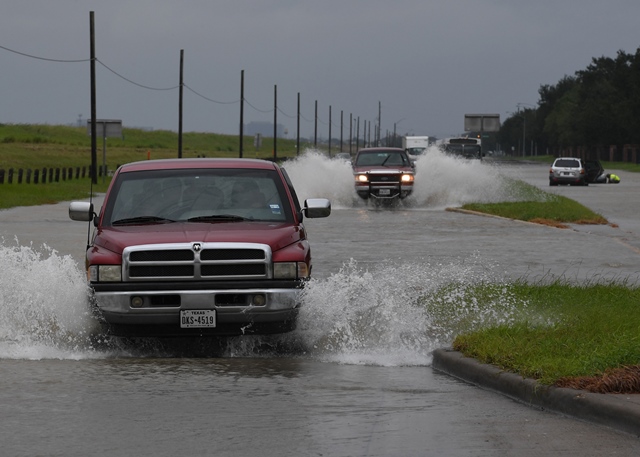
Now a tropical storm, Harvey made landfall just west of the town of Cameron, the National Hurricane Center said, with "flooding rains" drenching parts of southeastern Texas and neighboring southwestern Louisiana.
Trump to visit deluged Texas to survey response to storm Harvey
Harvey's return comes after the monster storm pummeled Texas with record rainfall, transforming roads into rivers and forcing thousands out of their homes in America's fourth largest city Houston.
Residents of western Louisiana braced for Harvey's maximum sustained winds of close to 45 miles per hour (72 kilometers per hour), with forecasters predicting another five to 10 inches (13 to 25 centimeters) of rain could hit the region.
They expect Harvey will gradually weaken to a tropical depression by Wednesday night.
But low-lying New Orleans was still girding for the storm, which made landfall a day after the 12-year anniversary of Katrina, which ravaged the vulnerable city which is famous for its jazz and cuisine.
Nine dead as hurricane Harvey hits Houston
The New Orleans branch of the National Weather Service said a heavy rain threat remained over southeast Louisiana and southern Mississippi and would continue through Thursday.
In Texas, emergency crews were still struggling to reach hundreds of stranded people in a massive round-the-clock rescue operation -- but the National Weather Service tweeted that weather conditions there were to finally improve.
The NWS had earlier said Harvey appeared to have broken a US record for most rain from a single tropical cyclone, with nearly 52 inches (132 centimeters) recorded in the Texan town of Cedar Bayou.



1732503274-0/Untitled-design-(43)1732503274-0-165x106.webp)
1732501636-0/Untitled-design-(42)1732501636-0-165x106.webp)












COMMENTS
Comments are moderated and generally will be posted if they are on-topic and not abusive.
For more information, please see our Comments FAQ